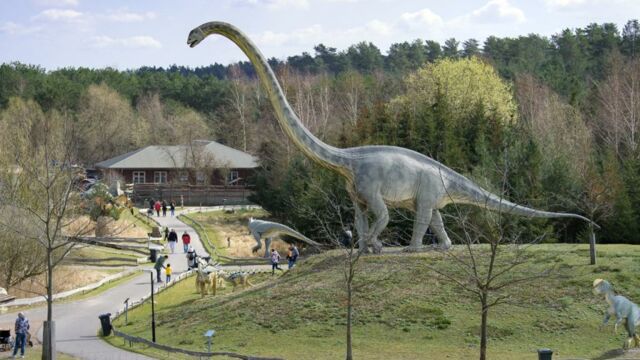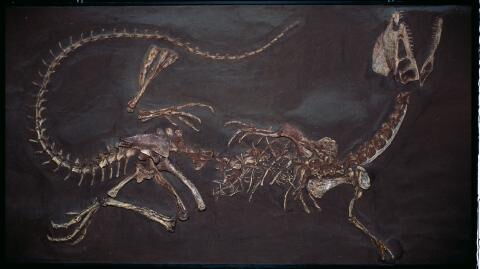Scientists have discovered 17 curved teeth from a giant herbivorous dinosaur that roamed the Australian state of Queensland millions of years ago.
Discover our latest podcast
An 'unusual' find
The find was made at an excavation site close to the western Queensland town of Winton, which palaeontologists believe was at the edge of an inland ocean approximately 96 million years ago.
In the past, several partial sauropod skeletons have been discovered from what The Guardian describes as the 'fossil hotspot,' however cranial remains, including teeth, are rare. Dr Stephen Poropat from Melbourne’s Swinburne University of Technology said, as reported by ABC News:
We've found dozens of sauropod skeletons in Winton over the past two decades, and this was the first one that preserved a lot of teeth which is really unusual.
The discovery is doubly significant as sauropod dinosaur teeth are exceptionally rare in Australia.
Dinosaur teeth from Diamantinasaurus matildae unearthed in outback Queensland, Australia. They are between 98 and 95 million years old https://t.co/8edBd0OMGQ
— Alfons López Tena 🦇 (@alfonslopeztena) July 15, 2022
What was the sauropod diamantinasaurus matildae?
The sauropod diamantinasaurus matildae was a plant-eating, long-necked titanosaur and was one of the largest animals ever to walk the earth, weighing in at 20-tonnes. Dr Poropat said the teeth 'are between 98 and 95 million years old' and could reveal new information about their diet.
Initial examinations suggest the teeth come from a sauropod that fed on vegetation from a height of between one to 10 metres. As Dr Poropat said, 'imagine a three-storey building.' This differs to other sauropods, which typically had more plentiful, narrower teeth suited for eating lower to the ground.
Before, scientists believed sauropods used peg-like teeth to primarily eat leaves and were unable to chew, swallowing stones to grind up food in their stomachs. However, coarse scratches on the 'robust and chunky' teeth indicate the diamantinasaurus may have chewed harder food.
Dr Poropat said:
The relatively robust teeth of diamantinasaurian sauropods would have enabled them to procure parts of plants that were relatively hardy, conifer cones for example.
Read more:
⋙ Never-seen-before skeleton of a giant dinosaur discovered in Argentina















